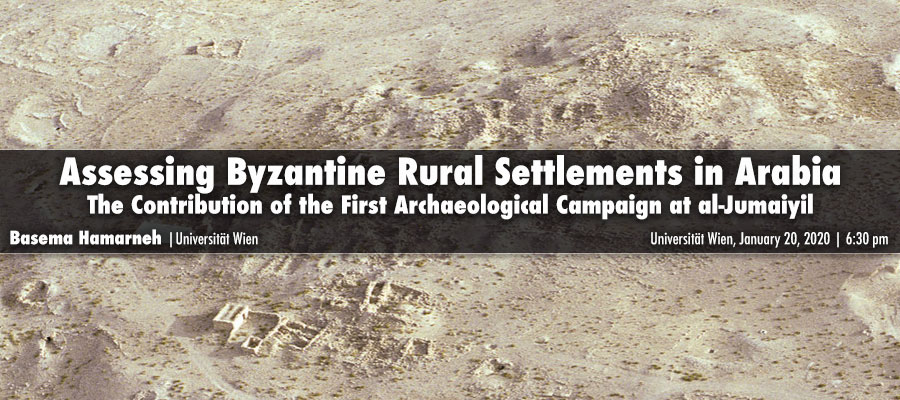Assessing Byzantine Rural Settlements in Arabia: The Contribution of the First Archaeological Campaign at al-Jumaiyil, lecture by Basema Hamarneh (Universität Wien), Universität Wien, January 20, 2020, 6:30 pm
The archaeological site of al-Jumaiyil, lies 35 km to the south west of Madaba on the road to Dhiban, and about 2 km to the West of the Unesco World Heritage site of Umm er- Rasas. Despite of the considerable extension of the archaeological remains, al-Jumiayil has received only limited scholarly attention. The site was accorded brief notes by Tristram in 1873, Vailhé in 1896, Brunnow and von Domaszewski in 1904; Musil in 1907/08; Glueck in 1933 and Savignac in 1936. According to scholarly opinion the settlement of al-Jumaiyil is generally identified with Beth Gamul of Jeremiah 48, 23 as part of the towns of Moab and its Plateau. The rapid agricultural and urban development in the area surrounding Umm er-Rasas, deemed it necessary to launch an intensive field investigation project at al-Jumaiyil, assisted by the previously conducted archaeological research in neighbouring sites, and by the survey of settlement patterns, ancient agriculture and productive facilities. The first season of excavation was conducted in August 2019 by the Institute of Classical Archaeology of the University of Vienna with a permit from the Department of Antiquities of Jordan. The archaeological investigations aim to address the spatial organisation of a rural settlements in Byzantine and Islamic periods. The main objective is to obtain stratigraphic evidence of the chronological development of the settlement and to acknowledge the relationship between space and ritual, and how it reflected on architecture and socio-economic activities.
Basema Hamarneh is Professor of Late Antique and Early Christian Archaeology in the Department of Classical Archaeology at the University of Vienna. Her research interests are settlement patterns, monasticism, mosaics, and Byzantine hagiography applied to topography and to visual culture.
